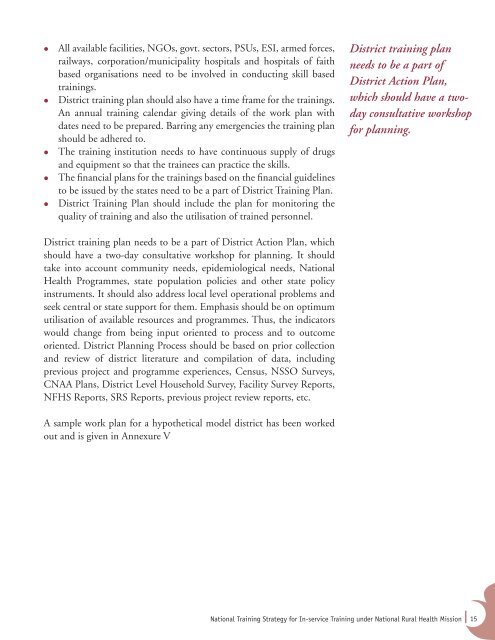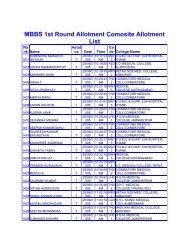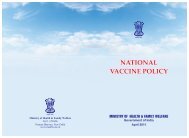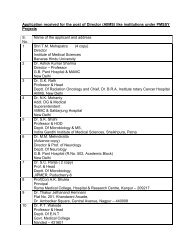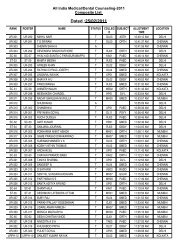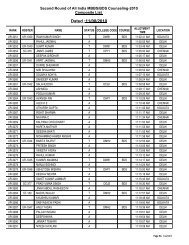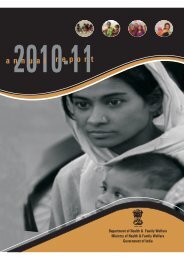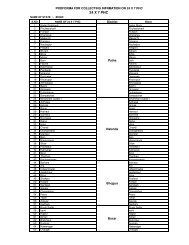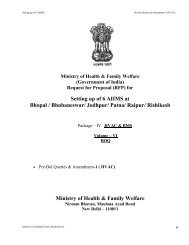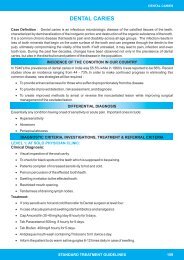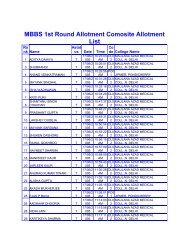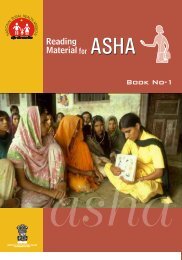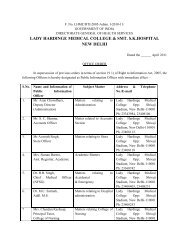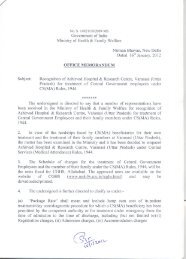National training strategy - Ministry of Health and Family Welfare
National training strategy - Ministry of Health and Family Welfare
National training strategy - Ministry of Health and Family Welfare
Create successful ePaper yourself
Turn your PDF publications into a flip-book with our unique Google optimized e-Paper software.
� All available facilities, NGOs, govt. sectors, PSUs, ESI, armed forces,<br />
railways, corporation/municipality hospitals <strong>and</strong> hospitals <strong>of</strong> faith<br />
based organisations need to be involved in conducting skill based<br />
<strong>training</strong>s.<br />
� District <strong>training</strong> plan should also have a time frame for the <strong>training</strong>s.<br />
An annual <strong>training</strong> calendar giving details <strong>of</strong> the work plan with<br />
dates need to be prepared. Barring any emergencies the <strong>training</strong> plan<br />
should be adhered to.<br />
� The <strong>training</strong> institution needs to have continuous supply <strong>of</strong> drugs<br />
<strong>and</strong> equipment so that the trainees can practice the skills.<br />
� The financial plans for the <strong>training</strong>s based on the financial guidelines<br />
to be issued by the states need to be a part <strong>of</strong> District Training Plan.<br />
� District Training Plan should include the plan for monitoring the<br />
quality <strong>of</strong> <strong>training</strong> <strong>and</strong> also the utilisation <strong>of</strong> trained personnel.<br />
District <strong>training</strong> plan needs to be a part <strong>of</strong> District Action Plan, which<br />
should have a two-day consultative workshop for planning. It should<br />
take into account community needs, epidemiological needs, <strong>National</strong><br />
<strong>Health</strong> Programmes, state population policies <strong>and</strong> other state policy<br />
instruments. It should also address local level operational problems <strong>and</strong><br />
seek central or state support for them. Emphasis should be on optimum<br />
utilisation <strong>of</strong> available resources <strong>and</strong> programmes. Thus, the indicators<br />
would change from being input oriented to process <strong>and</strong> to outcome<br />
oriented. District Planning Process should be based on prior collection<br />
<strong>and</strong> review <strong>of</strong> district literature <strong>and</strong> compilation <strong>of</strong> data, including<br />
previous project <strong>and</strong> programme experiences, Census, NSSO Surveys,<br />
CNAA Plans, District Level Household Survey, Facility Survey Reports,<br />
NFHS Reports, SRS Reports, previous project review reports, etc.<br />
A sample work plan for a hypothetical model district has been worked<br />
out <strong>and</strong> is given in Annexure V<br />
District <strong>training</strong> plan<br />
needs to be a part <strong>of</strong><br />
District Action Plan,<br />
which should have a twoday<br />
consultative workshop<br />
for planning.<br />
<strong>National</strong> Training Strategy for In-service Training under <strong>National</strong> Rural <strong>Health</strong> Mission 15


